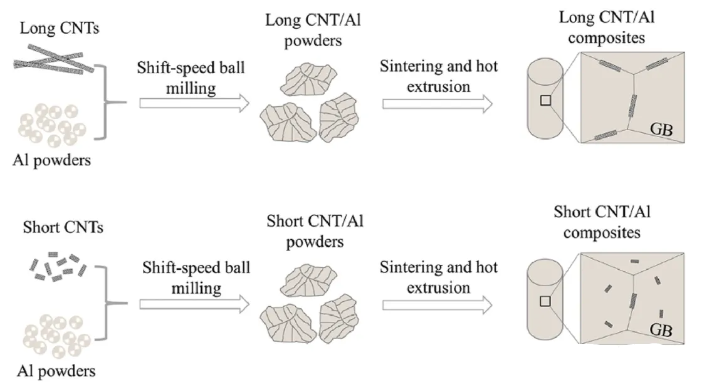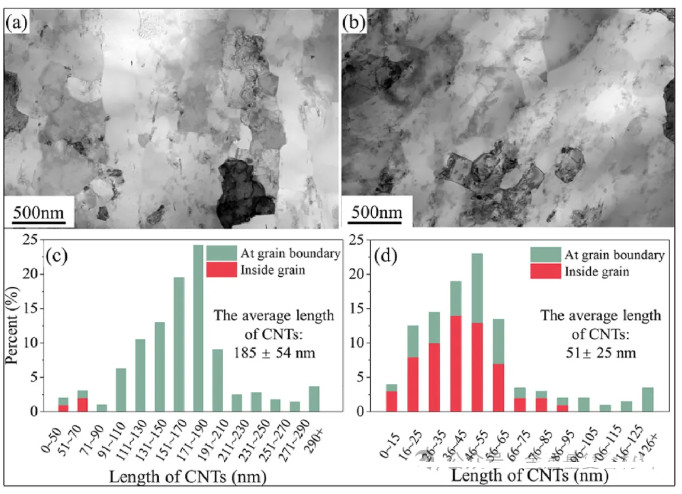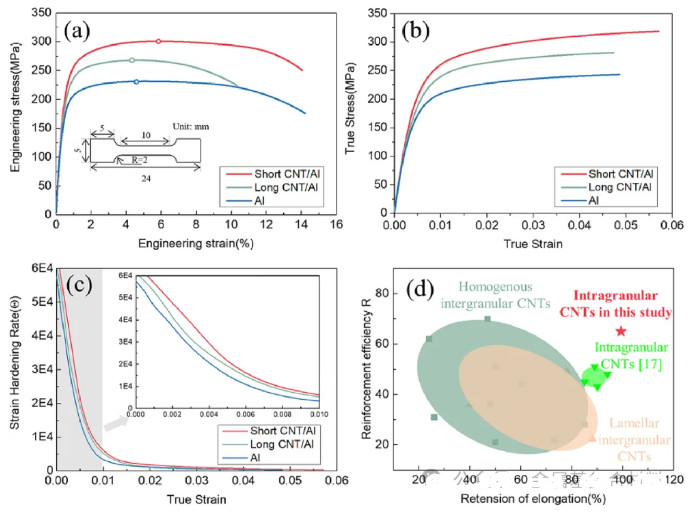Researchers have made a breakthrough in the development of carbon nanotube (CNT) reinforced aluminum composites by utilizing ultra-short CNTs with unique intra-crystalline dispersibility. The nanoscale carbon nanotubes are uniformly distributed within the ultra-fine aluminum grains. When compared with typical CNT/Al composites with inter-granular CNT dispersion, this intra-crystalline carbon nanotube/aluminum composite has a stronger ability to anchor and maintain dislocations, resulting in enhanced strength and ductility. This innovative intra-crystalline dispersal strategy provides a new avenue for developing strong and tough nanocarbon reinforced metal-based composite materials. The research has been published recently in a prestigious academic journal.
According to the researchers, the utilization of ultra-short CNTs provides several advantages over traditional CNTs, including better dispersibility and lower processing costs. The distribution of CNTs inside the aluminum grains eliminates the risk of CNT agglomeration and the formation of interfacial voids. This intra-crystalline dispersion significantly improves the overall mechanical performance of the composite material.
The study provides insight into the mechanical properties of intra-crystalline carbon nanotube/aluminum composites and opens up new possibilities for designing nanostructured metal-based composite materials with superior strength and ductility. Such materials have potential applications in aerospace, automobile, and other high-performance engineering fields.

Figure 1. Schematic diagram of preparing long and short CNT/Al composite materials through variable speed ball milling, sintering, and hot extrusion processes

Figure 2. TEM images of long (a) and short (b) CNT/Al composite materials. The percentage and length distribution of intergranular and intragranular carbon nanotubes in extruded composite materials: (a) long CNT/Al composite materials, (b) short CNT/Al composite materials.

Figure 3. (a) STEM image of long carbon nanotube/aluminum composite material, with white arrows displaying carbon nanotubes and (b-d) HRTM displaying carbon nanotube structure, with γ - Al2O3 and Al4C3; (e) Short CNT/Al composite material, white arrow represents CNTs, (f-h) HRTEM represents the structure of CNTs and γ - Al2O3.

Figure 4. (a) Engineering tensile stress-strain curve, (b) True stress-strain curve, (c) Strain hardening rate curve of Al and long short CNT/Al composite materials. (d) Elongation rate and strengthening efficiency.

Figure 5. STEM images and dislocation density of composite materials after 4% tensile deformation: (a), (c) long CNT/Al composite materials, and (b), (d) short CNT/Al composite materials.
SAT NANO is one of the best supplier of carbon nanotube, we can offer MWCNT, MWCNT-OH, MWCNT-COOH powder, if you have any enquiry, please feel free to contact us at sales03@satnano.com






























